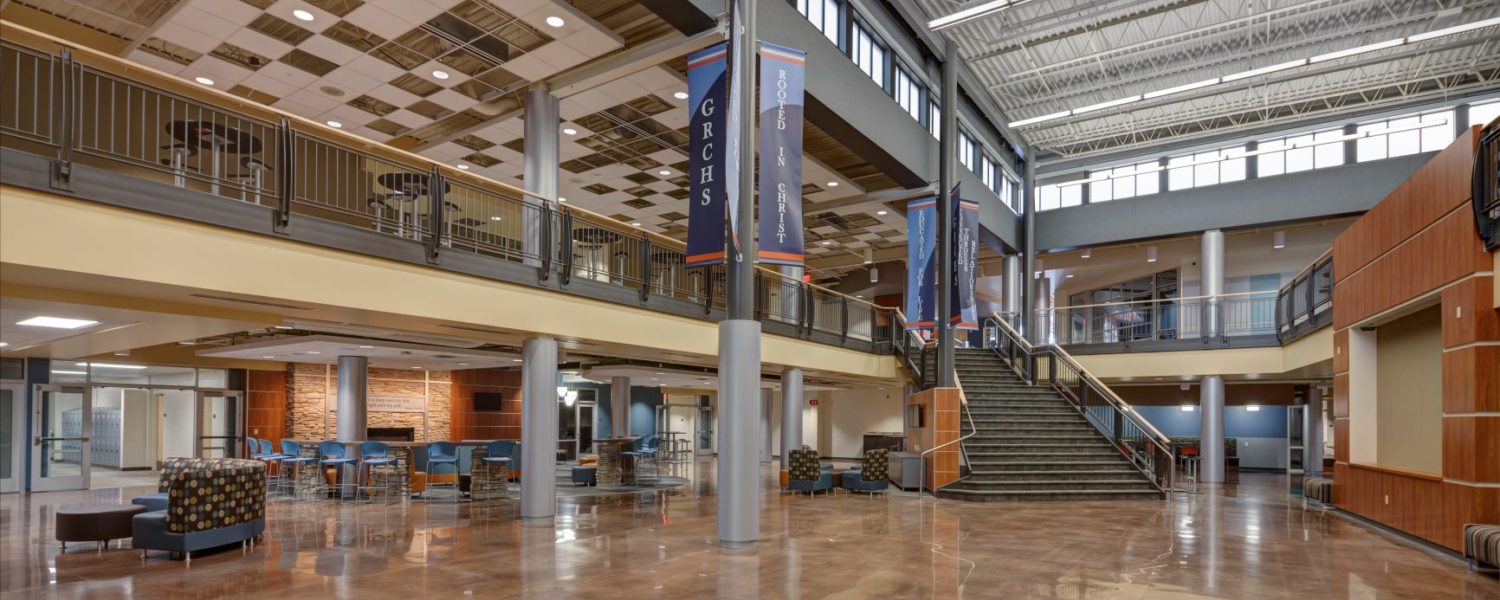By Quincey Smail
When most people hear about the Acoustic Standards in the LEED for Schools Rating System (LEED v4), their eyes start to glaze over like a pair of day-old Krispy Kremes.
With over 30 pages of detailed acoustical design criteria, the ANSI Standards are a force to be reckoned with.
What are the basic principles of acoustical design that will “LEED” to enhanced learning environments, happy school board officials, and, of course, impressive LEED scores?
Three Criteria
To create effective acoustical spaces for education, designers must observe criteria within three important measurements: reverberation times, STC ratings, and background noise levels.
- Reverberation Time
Reverberation time is how long it takes for the sound to decay by 60 dBA. In practical terms, it measures the sound absorption in a space. To meet the LEED guidelines, core learning spaces are allowed reverberation times of 0.6 to 0.7 seconds depending on the room size.
- Sound Transmission
The second design consideration is STC, or Sound Transmission Class. STC measures how much sound comes through a barrier (like a wall, ceiling, or floor.) For example, a student sitting at the back of the class can lose her concentration if she hears the voice of a teacher in the next classroom.
LEED references the ANSI standard for classrooms and requires STC 50 for core learning spaces. More critical and demanding spaces, such as, music rooms, auditoria, mechanical equipment rooms, gymnasiums, and larger spaces require a minimum STC 60. As you might imagine, the higher the number, the better the isolation.
- Background Noise
The final element to control is the background noise level. This is always hard to isolate because the sounds come from everywhere. Environmental noise, AC units, boiler systems, all contribute to background noise levels, and can break students’ concentration levels, which ultimately inhibit learning. The LEED guide calls for background noise levels in most learning spaces not to exceed 35 dBA to count toward the LEED points.
Get It Right the First Time
Working with an independent acoustical consultant at the beginning of your project can help the design to achieve the LEED qualifications.
More Details
You can download the Acoustical Performance Criteria, Design Requirements, and Guidelines for Schools at the Acoustical Society of America website (you need to go through a purchase process, adding to a cart, but it’s free), www.acousticalsociety.org/classroom-acoustics.
Active Learning Classrooms
Removing obstacles to learning. That’s the mantra around the movement toward Active Learning Classrooms (ALC). This departure from the traditional lecture format, and toward flexible furniture, writing surfaces, collaborative activities, and integrated technology brings a new set of challenges when designing a space to deliver a learning environment free from the obstacles created by noise.
ALC is designed with furniture and technology that are inviting and flexible, providing more substantive opportunities for instructors and students to engage actively in the teaching and learning process.
To be sure students and instructors are able to hear one another well and fully engage in learning, the strategic placement of acoustical treatment, and the control of mechanical system noise, are essential components of the room design. The technical systems must work hand-in-hand with the room design to allow for ease of use for large or small group activity.
Studies have shown that such settings allow students to learn up to three times more and retain greater knowledge.
Some students may work well in noisy spaces. While others, including students with learning or hearing impairments, may find it difficult to focus or hear well in an ALC. The combination of the human brain and the ear is an amazing biological structure that has the ability to tune sounds in and out.
When this system is hampered, learning and communicating is impaired. Sometimes environments are so sonically hostile that, regardless of fully functioning biology, it is nearly impossible to concentrate on anything.
With careful consideration and strategic acoustical and technical design, ALCs can avoid obstacles to learning, and allow students of all learning styles and abilities to participate more richly in their education.
Quincey Smail is an acoustical consultant in Grand Rapids, Michigan. This article is courtesy of ABD Engineering and Design, a multidisciplinary engineering and design firm providing comprehensive consulting services in three distinct practice areas—Architectural Acoustics, Audiovisual Design, and Environmental and Industrial Noise and Vibration Control, www.abdengineering.com.





